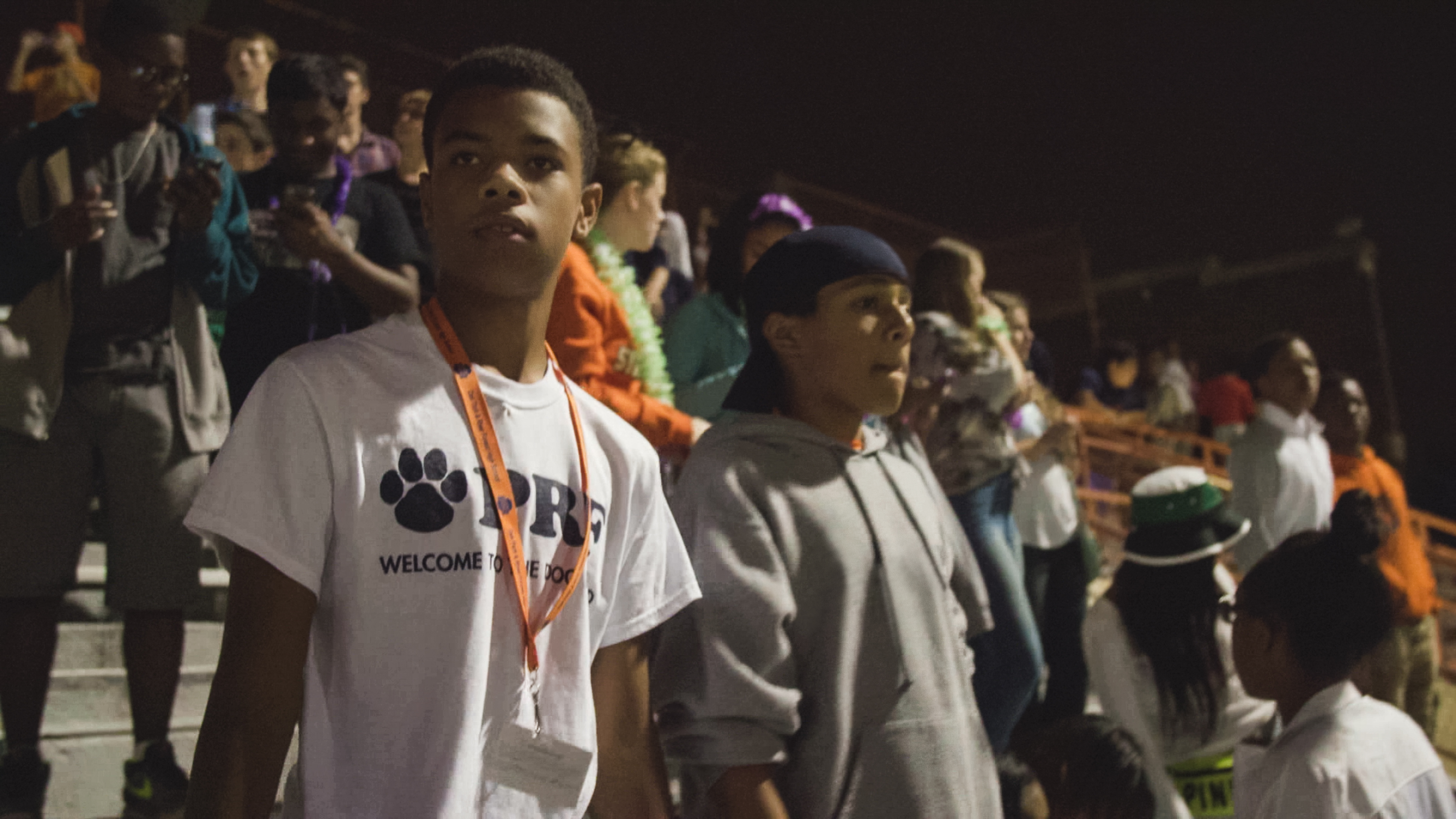Oak Park is the type of place that likes to remind you how cool and progressive it is. If Oak Park were a mom, it’d tell you stories about how it used to follow Def Leppard around the country — that you should take a gap year and follow Ke$ha and Macklemore if that’s what you really want to do.
If Oak Park were a mom, it would also tell your black friends that they’re so well-spoken and congratulate them on being the first in their family to attend college, even though your black friend’s dad is an engineer.
The only reason anyone would be making a documentary about a high school is that something either very great or very, very, very bad happened there. In the case of America to Me, the Steve James docuseries that premiered on Starz last night, film crews followed students at Oak Park and River Forest High School during the 2015–16 academic year because there was a Black Lives Matter assembly where only black students were invited, and the entire town blew an “All Lives Matter” gasket.
There’s also the matter of OPRF’s stagnant achievement gap. I attended the school from 2002 to 2006 and heard the phrase “achievement gap” on a regular basis. At the time, OPRF had no idea what to do with black students achieving below the state average, and clearly has no idea what to do with them now.
America to Me’s first episode, “What’s the Big Deal about Oak Park?,” follows five black students in their first days of the school year. I don’t remember being welcomed by a marching band and the drill team when I arrived to pick up my ID and schedule, so I guess some things do change.
The students in the series are typical high schoolers. Tiara flips out when she auditions for a cappella group in front of her longtime crush. Charles drops some bars for Adam Levin and Peter Kahn as part of the school’s Spoken Word extracurricular program, roasting his friend’s Frederick Douglass hairstyle. Grant is a freshman who spends most of the episode trying to find room 230. Terrence is a video gamer with an Individualized Education Plan being pushed by his family to remain in College Prep classes. Ke’Shawn admits during an icebreaker exercise that he wouldn’t change a single thing about himself and that he hates school.
They’re charming and headstrong. They go to OPRF football games and believe that OPRF is going to win. They’re young and innocent. But every one of these students realizes that Oak Park isn’t that special, and it isn’t all that progressive.
When you start to really look at the interactions between the students at OPRF and most of their teachers, this becomes really clear. In one scene, Terrence forgets his gym uniform and Coach Ledbetter rants at him that he’s doing all the taking and isn’t doing any giving. Wait…what? What type of relationship does Coach think students and teachers are supposed to have? It’s an unequal power dynamic, sir, and that’s the point. (Also, can’t you get a loaner gym uniform for 50 cents anymore?)
In another scene, Ke’Shawn’s chemistry teacher flatly tells the camera that Ke’Shawn just didn’t achieve and must learn to feed himself. Oh boy.
Then there’s this piece of work: OPRF’s cheerleading coach, Coach D. In one scene, Coach D calls Tiara a “coachable student,” adding that a coachable student is an employable person. What the hell? A student isn’t a potential employee, and students’ worth shouldn’t be judged on how well they’re able to satisfy their teachers’ and coaches’ needs.
Scene after scene in America to Me, students are expected to do what makes their instructors feel most comfortable. There’s a level of work the teachers are willing to put in, and it’s up to the students to meet the teachers where they are — not the other way around. Terrence’s mother drives this point home: While discussing her son’s academic struggles, she says that the school never expects excellence from black students. That the students alone are responsible for their own successes and failures.
There’s more: In yet another scene, members of the majority-black varsity cheerleading squad lament Coach D’s tendency to coach with an iron fist and call the students “giiiirlfriend!”. A white student on the squad notes that Coach D didn’t used to teach like this, but that the cheerleading squad is majority black and requires a certain level of authority — that politeness and kindness won’t work on a black squad. I’M SORRY. WHAT? I gotta lie down. Once again, the assumption is that black students require a firm hand and a narrow range of expectations. It’s exhausting.
The silliest microaggression comes when Tiara, while auditioning for the a cappella group, is asked if she can beatbox. All of the white children demonstrate. If you can imagine something more awkward than a room full of white kids demonstrating beatboxing to a black kid, please never tell me.
These little images and moments reveal a small fraction of what it’s like to be a black student at OPRF. No one expects you to be great, but you’re expected to be great because OPRF has a reputation to maintain. The school desperately wants to find a solution to the black achievement gap, and it’s willing to do everything to solve the issue. Except change.



